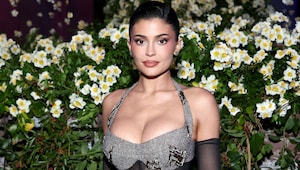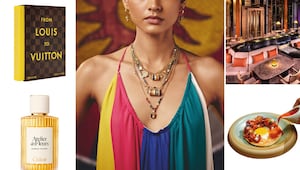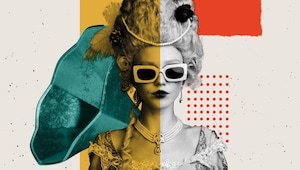9 Women Talk About How the Plus-Size Revolution is Changing Mindsets for the Better
Checking in on how the body positivity movement is impacting women.

When US-based body-positivity -influencers like Tess Holliday and Jessamyn Stanley took to Instagram in the early 2010s, they cultivated a space where unaltered images of women’s bodies challenged beauty norms and where you didn’t need a flat belly or cellulite-free thighs to attract thousands of supportive comments. On a perfection-obsessed platform, their accounts gained millions of Likes and followers.
Their message has finally gone mainstream, with major fashion brands expanding their sizing options and featuring women with diverse and often unretouched bodies in ad campaigns. Hop on the Aerie, ThirdLove, or Thinx social-media accounts and you’ll see models with soft curves and belly rolls posing alongside those with ripped abs. On the ASOS and Outdoor Voices sites, un-Photoshopped women of varying sizes rock spandex. J.Crew, Marks & Spencer, and FabAlley now have a line of size-inclusive clothing too.
The number of modelling agencies catering to a more representative group of girls has also increased in the past few years, says Suzanna Campbell, an agent at APM Models New York (whose own clients used to be mostly sizes 0 or 2 but now represent a broader range of sizes). “We’re definitely seeing a lot more inclusive images of bodies in commercial fashion,” she adds. (FWIW, Cosmo is also -committed to showing more gorgeous diverse images in its pages. Full send.)
Getting Good Vibes
But is BoPo’s new ubiquity making an actual difference in how women view their bodies? Maybe. A 2018 study published in Sex Roles found that women reported less dissatisfaction with the way they look after seeing pics of larger models versus thin ones. The study authors concluded that inclusive advertising images “could help to neutralise or at least reduce the negative impact of...(idealising) thin and overly thin women.” So: progress.
Similar research found that women who wished they were skinnier felt more body satisfaction after viewing average- and plus-size models on a TV screen. “It appears that advertising campaigns can increase psychological well-being and reduce body-image concerns by incorporating more realistic body types,” says co-author Jessica Ridgway Clayton, PhD, assistant professor in the department of retail, merchandising, and product development at Florida State University. Or as NY-based therapist Kathryn Stamoulis, PhD, puts it: “Seeing plus-size women adored and desired in an ad allows more viewers to see themselves as the star.”
This rings true for Ashley Evans, a 24-year-old from Baltimore, who watched countless seasons of America’s Next Top Model, in which lithe contestants looked nothing like her plus-size self. When she finally saw full-figured, unairbrushed models in the 2014 Aerie Real campaign, she felt relief, “like it was okay to be bigger,” she says. “I felt like I was accepted.”
It’s not just women with fuller figures who reap the benefits: Lauren Pinkerton, 28, of New York City, says she’s less apt to judge her Size 4 body thanks to the more realistic media images she has been seeing. “Instead of shaming myself for having cellulite, wrinkles, and freckles, for the first time, I feel like I can embrace them.”
Or Being Left Behind
Ironically, some of the women Cosmo spoke to actually feel worse after viewing larger models. The reason: even these images tend to adhere to traditional beauty ideals and can appear too perfect. “They’re only bigger in the ‘right’ places,” says Priya Kapoor, a 19-year-old from Mumbai, who describes herself as overweight. “Plus-size models may have wider hips or a bigger butt than thin models, but they still make me feel unattractive because I have a soft stomach and stretch marks.”
Megan Jayne Crabbe, a UK-based body-positive activist with 1 million Instagram followers and author of the book Body Positive Power, says that even diversity-focused brands could do more. “The most marginalised people—like larger people, people with visible disabilities, and gender nonconforming people—are still left out,” she says.
A good source of inspiration: Insta’s OG influencers who serve up a steady stream of real-life examples of what it means to love yourself, says Kathryn. Following them could help women of all sizes crib a -healthier body image. “Our social feeds should feature body diversity that goes beyond what any brand is giving us,” adds Megan.
Neha Parulkar

BoPo Influencer| @nehaparulkar
“Nowadays, the term body positivity is associated with ‘plus size’. But, in reality, the movement was started to teach people with marginalised bodies-—read fat, skinny, dark-skinned, trans, and queer—to love themselves and feel confident enough to wear whatever they like. And that’s what I’ve been trying to do on my Instagram account. Whether by sharing my personal journey or my pictures, I’ve been trying to create a space for women where they can discuss their insecurities, share style tips, and uplift each other. If you want to do something similar, start by building a community that doesn’t discriminate between different body types.”
Anjana Bapat

Belly Dancer| @anjanabapat
“Four years ago, I started belly dancing professionally and that’s how my journey as a BoPo influencer began. During that time, I lost and gained a lot of weight, struggled with insecurities, and dealt with negativity on social media. But gradually, I learned that once you change your perspective and accept yourself the way you are, none of the negativity matters. And that feels great! Having said that, it doesn’t happen overnight. Learning to love your body, after years of hating it, is a continuous process, but trust me, it’s worth it. Start small, like figuring out your strengths, and not allowing haters to pull you down.”
Payal Soni

Plus Size Model| @_payalsoni_
“For years, society has dictated how women should look, dress, and behave. We’ve been shunned for not fitting into a certain dress size, lacking curves at the ‘right places’, or being dark-skinned. However, the narrative is changing slowly and steadily, thanks to women who are breaking societal norms by experimenting with their looks. You, too, can do the same by wearing outfits you’ve been afraid to try, such as bodycon dresses, strapless tops, or short skirts. Remember that every body is a bikini body if you’re confident enough.”
Neelakshi Singh

Brand Consultant| @plumptopretty
“Till a few years ago, I wasn’t confident of putting up my pics online—because I hated the way I looked. I’d partially cover my face or edit the images to hide my flaws. But all that changed when I realised that there are no filters in real life. So I joined the body positivity movement on social media, and after years of putting myself out there and working towards loving myself for who I am, I’m finally able to see the impact of my online presence. Recently, one of my followers DM’ed me to say that his girlfriend bought a pair of shorts after being inspired by my posts. It was a humbling experience, and I hope to inspire more women, both online and IRL.”
Tanvi Geetha Ravishankar

Blogger| @thechubbytwirler
“BoPo has turned into a huge movement on social media, thanks to plus-size models, bloggers, influencers, and celebrities who are encouraging people to embrace their bodies just the way they are. But even though brands in India have started employing plus-size models, they have a long way to go. Many just follow the West blindly. For example, Size 16 is considered a plus size there as an average woman in the West ranges from Size 4 to Size 8. But it can’t be so in India, our average size is between 10 and 12! So, we need to be careful when we’re collaborating with brands because they have the power to influence young, impressionable minds.”
Anindita roy

Plus Size Model|@theplusgirl
“There’s a notion that the body-positivity movement promotes obesity, but that’s not the case. When a woman is comfortable in her body and loves her curves, it doesn’t necessarily mean that she’s unhealthy. If we want to make the world an equal place for everyone, we need to do away with weight-based stereotypes that stigmatise fat people and judge them on the basis of their outer appearance. We have to realise that fat-shaming can not only make people feel insecure but can also pave the way for mental illnesses like anxiety, depression, and even bulimia. The idea is to eat clean and exercise regularly instead of doing crash diets that serve no purpose.”
Aashna Bhagwani

Blogger | @aashna_bhagwani
“Growing up, I struggled with body-image issues because I didn’t have a role model to look up to. Whether it was in movies, TV or print media, no-one looked like me. That inspired me to start a conversation around body positivity through my social media accounts. One thing led to another and soon I became a part of the global movement. Although we’ve come a long way in promoting self-love and acceptance, it’s still not enough. The goal is to stop putting women into boxes like plus size, skinny or dark, and instead, normalising all shapes, sizes, and colours.”
Sonal Somani

Curvy Stylist| @sonalandotherthings
“I’ve always been plus-sized and proud. From a young age, I was encouraged to love my body just the way it is. So when I started working as a stylist, I was surprised to see that many curvy women had completely stopped having fun while dressing up. That’s when I created my Insta account to help women understand that anyone can wear anything as long as the outfit flatters your body and highlights your best features. Also, don’t shy away from trying different silhouettes, prints, and colours just because you’ve been conditioned to wear black to hide your curves. Go all out.”
Nisha Mansharamani

BoPo Influencer| @theplussizewomaniya
“The most important aspect of the body-positivity movement is representation. For example, women like Ashley Graham and Diandra Soares, who’ve broken stereotypes and challenged norms by totally owning their identities and being proud of it. And their work, both online and offline, is important because body shaming can cause a lot of mental trauma and self-hatred. At such a time, a motivating post can do wonders and, perhaps, even save a life. That’s what I’ve been seeking to do as well. I’ve shown curvy women that they, too, deserve to wear pretty lingerie, and feel and look good in it just like any other woman.”
more from Fashion

Have you found true love this cuffing season or are you just “winter coating” for the holidays?

The Cosmo-approved holiday beauty list to help you glow through party season

Why 'Heated Rivalry' has everyone hot, bothered, and obsessed

Regal revivals, fashion shake-ups, and everything new we’re obsessing over this month

When is the new season of 'Euphoria' out? Plus 5 things we know about it

Why your best friend might be the most stable relationship you’ll ever have

The beauty drops currently living rent-free on our vanities

Everything you need to know about dark spots before you try to fade them

I’m a romance writer—my husband and I lived out the sex scene I was writing

Why more people are turning to audio erotica for more intimate fantasies
